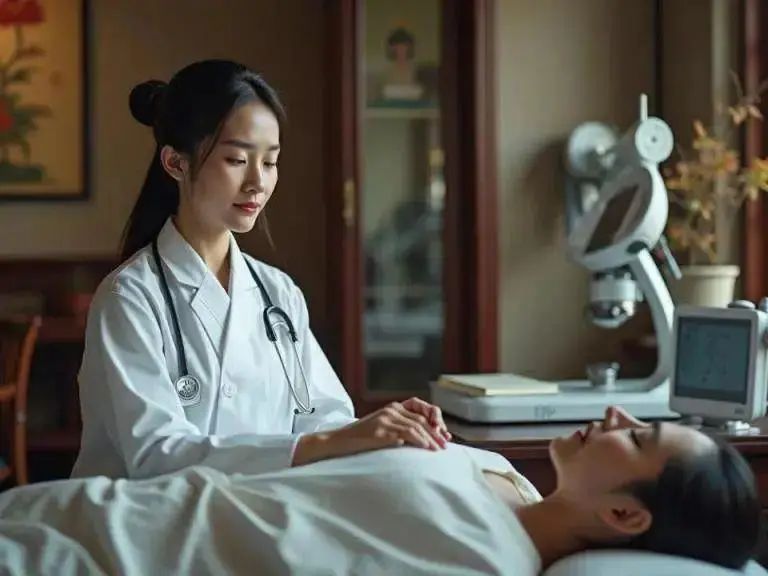
Cervical pain, a common ailment among modern individuals, often causes significant distress. But did you know? Acupuncture, as a traditional Chinese medical therapy, has unique efficacy in alleviating symptoms of cervical spondylosis. Today, let me take you into the world of acupuncture and understand how to select points for treating cervical spondylosis.

The Secrets of Acupuncture
Acupuncture, as the name suggests, involves the insertion of needles at specific acupuncture points on the human body to adjust Qi and blood, and balance Yin and Yang. Traditional Chinese Medicine (TCM) believes that the occurrence of cervical spondylosis is closely related to the stagnation of Qi and blood, and the obstruction of meridians. Acupuncture can unblock the meridians and harmonize Qi and blood, thus achieving the goal of treating cervical spondylosis.
Principles of Point Selection

When treating cervical spondylosis, point selection is a crucial step. Generally, we need to choose corresponding acupuncture points based on the type and symptoms of cervical spondylosis. Here are some common principles for point selection:
-
Local Point Selection: For neck pain caused by cervical spondylosis, points near the neck can be selected for treatment, such as Fengchi (GB20), Tianzhu (BL10), and Dazhui (GV14).
-
Distal Point Selection: Distal point selection mainly involves stimulating other points that are connected to the cervical region through meridians to achieve therapeutic effects. For example, Hegu (LI4), located on the back of the hand, is a key point for treating headaches and can alleviate headaches caused by cervical issues; Quchi (LI11), located at the elbow, can clear heat and invigorate blood, which is effective for symptoms like fever and numbness in the arms caused by cervical spondylosis.
-
Pattern Differentiation Point Selection: Based on the patient’s constitution and condition, select corresponding points for treatment. For example, patients with a weak constitution can choose points like Zusanli (ST36) and Qihai (CV6) to tonify Qi and blood; patients with excessive Liver Yang can choose points like Taichong (LR3) and Xingjian (LR2) to pacify the Liver and subdue Yang.
Practical Application

Let me share a real case. Mr. Zhang, 50 years old, suffered from cervical spondylosis due to long hours of desk work, experiencing severe neck pain and even inability to turn his head. Upon a friend’s recommendation, he tried acupuncture treatment. The acupuncturist selected points like Fengchi (GB20), Tianzhu (BL10), and Dazhui (GV14) for needling based on his symptoms. After several treatments, Mr. Zhang’s neck pain significantly reduced, and he was able to turn his head normally.
Precautions
Of course, acupuncture treatment for cervical spondylosis is not infallible. There are some precautions we need to keep in mind during the acupuncture treatment process:

-
Avoid Hunger or Fullness: It is essential to avoid being hungry or overly full before acupuncture to ensure the effectiveness of the treatment.
-
Select a Qualified Medical Institution: When undergoing acupuncture treatment, it is crucial to choose a reputable medical institution and a qualified acupuncturist to ensure the safety and effectiveness of the treatment.
-
Maintain a Pleasant Mood: It is important to maintain a pleasant mood during acupuncture treatment to avoid the influence of tension and fear.

